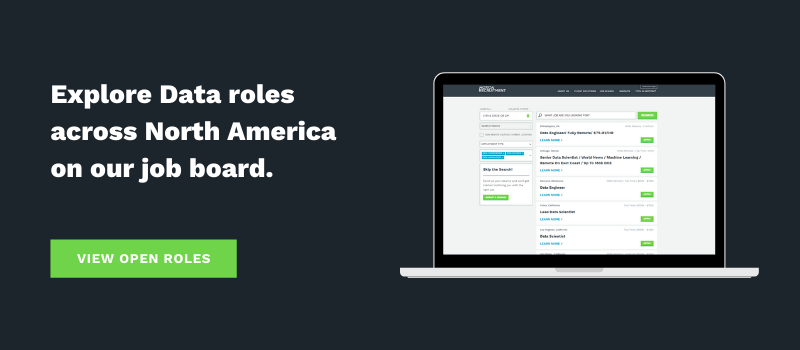In the changing tech industry landscape, the significance of data-related roles cannot be overstated. Data jobs continue to be crucial roles that drive innovation and shape the future of the tech industry. Data scientists, analysts, engineers and architects, these data professionals form the backbone of modern digital enterprises. They harness the power of data to uncover valuable insights, inform strategic decision-making, and drive business growth.
From the biggest tech companies to start-ups just beginning their journey, mastering data has become a prerequisite for growing and staying competitive. Businesses now rely on data-driven approaches to optimize operations, enhance customer experiences, and develop groundbreaking products and services. This can be seen in the amount companies are spending in the data market, with figures in the big data and business analytics market reaching $225 billion in 2023, and projected to rise to $665 billion by 2033. As the volume and complexity of data continue to escalate, so does the demand for skilled professionals who can navigate this landscape with expertise and precision.
Did Data Salaries Change this Year?
Companies continue to realize the importance of data roles, but with the economic headwinds of 2023, salary increases were lower than in years past. According to Motion Recruitment's 2024 Tech Salary Guide, Data Engineering salaries increased on average by 2% year-over-year, which is equal to others in the IT industry this year.
What are the Biggest Trends in Data?
1. Edge Computing Complementing the Cloud in Data Analytics
While data storage in the cloud remains a core part of many businesses, edge computing at the start of the data-compiling process is becoming increasingly popular for many companies. By performing the initial data processing and filtering on the edge, businesses can optimize bandwidth usage by only sending key details to their cloud data centers.
Read More: What's in a Job Title? Solving the Data and AI Engineering Identity Crisis.
2. Generative AI in Data
Gartner is predicting that by 2026, more than 80% of enterprises will have used generative artificial intelligence application programming interfaces or models.
The data sector is one area where generative AI may have an underrated impact. Whether it be through data augmentation when real data availability is limited, finding abnormalities and anomalies in data, or helping maintain dataset integrity, knowing how to utilize AI tools is becoming vital for some positions in data.
3. Data Mesh Growing in Popularity
Coined and popularized by the founder and CEO of Nextdata Zhamak Kehghani in 2019, data mesh as a concept is picking up steam in tech companies across North America. Data mesh can allow for the opportunity to scale data management solutions while also cutting pain points across the board for all data users.
Data mesh focuses on considering data as a product and domain-driven ownership as opposed to centralizing all incoming data. With data mesh, subject matter experts stay with the data they know best and keep them in charge of their own ecosystem. This allows for a streamlined process while having a higher-quality data set.
Highest Paying Data Jobs
Top Data Salaries (Senior Level)
- Data Architect: $168,437 – $224,375
- AI Engineer: $145,591 – $201,607
- Computer Vision Engineer: $155,000 – $197,500
Top Data Salaries (Mid-Level)
- Computer Vision Engineer: $130,000 – $172,500
- Data Scientist: $124,811 – $171,415
- Machine Learning Engineer: $125,227 – $168,297
What Data Jobs Saw the Biggest Pay Increases Year-Over-Year?
- Computer Vision Engineer: 13.58%
- Data Warehouse Analyst: 4.95%
- Data Scientist: 3.75%
Looking for more salary data from across the tech industry? Download Motion Recruitment's 2024 Tech Salary Guide today through the form below to see over 100 IT salary ranges and insights on what 2024's hiring landscape looks like:

Motion Recruitment







